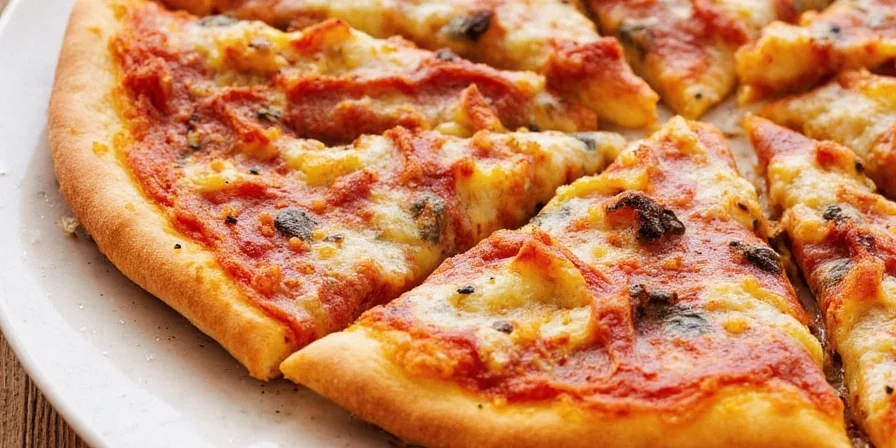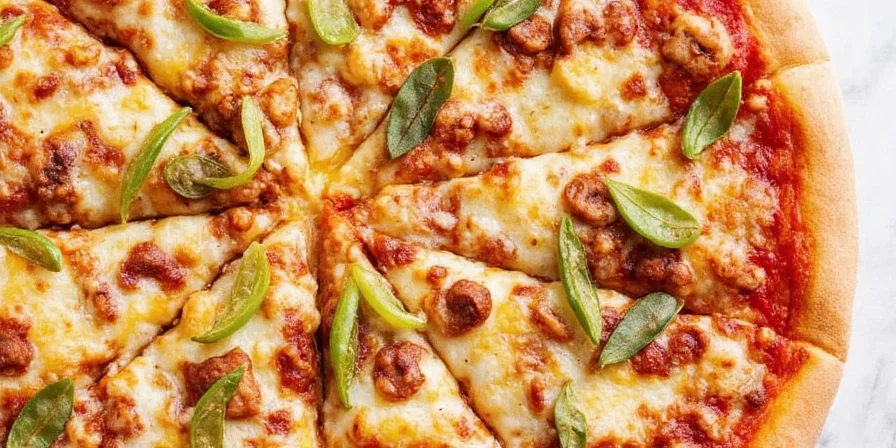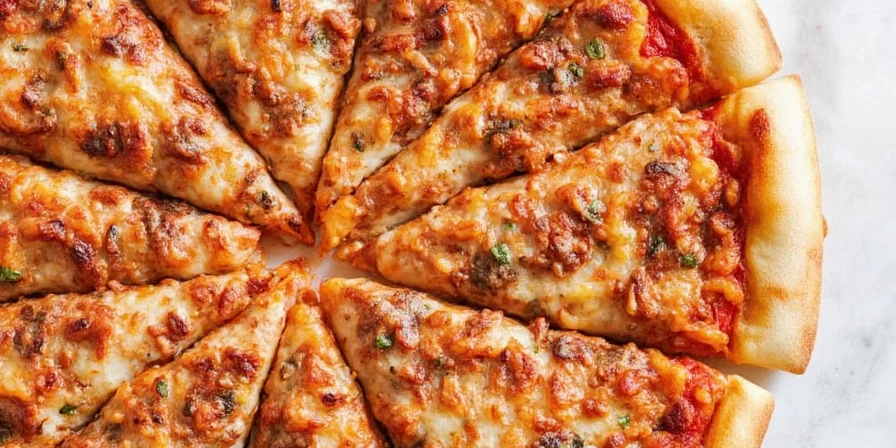If you think pizza is just cheese, tomato sauce, and standard toppings like pepperoni, it's time to explore uncharted flavor territories. This guide delivers actionable spice innovation strategies specifically for home cooks and culinary experimenters seeking to transcend traditional pizza boundaries. You'll gain practical techniques to transform ordinary pies into extraordinary culinary experiences through scientifically balanced flavor pairings that respect pizza's structural integrity.
Table of Contents
- Introduction
- Why Spice Matters on Pizza
- Top 7 Innovative Spices for Pizza
- Pro Tips for Pairing Spices with Pizza Flavors
- The Global Spice Revolution: Cultural Cross-Pollination Analysis
- How to Use These Spices Like a Pro
- Visual Spice Comparison Table
- Frequently Asked Questions
- Conclusion
Why Spice Matters on Pizza
Pizza's flavor architecture relies on balancing acidity, fat, and umami. Spices don't merely add heat—they modify molecular interactions between ingredients. For instance, capsaicin in chili flakes binds with fatty acids in cheese, creating new flavor compounds during baking. This chemical synergy transforms basic components into complex taste experiences impossible with standard toppings alone.

Understanding these interactions allows precise flavor engineering—turning predictable pizza into a dynamic culinary canvas where each spice serves a structural purpose beyond superficial seasoning.
Top 7 Innovative Spices That Deserve a Spot on Your Pizza
- Smoked Paprika – Adds a rich, earthy depth and a touch of smokiness that pairs beautifully with meats and veggies.
- Sumac – Tangy and citrusy, sumac brightens up any pizza and complements fresh greens like arugula.
- Fennel Seeds – With their mild licorice flavor, fennel seeds add complexity and are perfect with sausage or mushroom pizzas.
- Nutmeg – Don't save this one just for pumpkin pies! A dash of nutmeg adds warmth and enhances dairy-based sauces and cheeses.
- Chili Flakes (Calabrian or Aleppo) – For those who want a little heat without overpowering other flavors, these chili flakes offer a balanced kick.
- Garam Masala – This Indian spice blend brings aromatic warmth and works surprisingly well on vegetarian or chicken pizzas.
- Truffle Salt with Crushed Chili – The ultimate luxury pairing. Earthy truffle and spicy heat elevate even the simplest Margherita.

Pro Tips for Pairing Spices with Pizza Flavors
Here's how to ensure spices on pizza enhance rather than dominate:
- Balance Sweet and Savory: If your pizza has sweet elements (like fig jam or caramelized onions), use warm spices like cinnamon or nutmeg to enhance the contrast.
- Match Intensity: Hearty meats like pepperoni or chorizo do best with bold spices like smoked paprika or garam masala.
- Add Brightness: Herbs like basil or arugula shine when paired with zesty spices like sumac or lemon zest.
- Layer Heat Thoughtfully: Don't just sprinkle chili flakes everywhere. Try adding different levels of heat through oils, pastes, or infused salts.
- Use Whole Spices When Possible: Toasting whole fennel or coriander seeds before grinding them intensifies their flavor.

The Global Spice Revolution: Cultural Cross-Pollination Analysis
Modern pizza innovation stems from unprecedented culinary globalization. Unlike historical spice trade routes that took months, today's digital connectivity enables instantaneous technique sharing between Naples pizzaiolos and Mumbai street food vendors. This creates unique fusion opportunities: garam masala on pizza isn't appropriation—it's a logical evolution where Mediterranean flatbreads absorb South Asian warmth through shared fat-soluble compounds. The result? Flavor profiles that honor both traditions while creating something entirely new, demonstrating how digital age connectivity fundamentally reshapes culinary boundaries without compromising regional authenticity.
How to Use These Spices Like a Pro
Maximize flavor impact through strategic application timing:
- Mix into Dough: Add a pinch of nutmeg or garam masala into your dough for a subtle background flavor.
- Blend into Oil or Butter: Infuse olive oil or butter with spices like smoked paprika or crushed chilies, then brush onto the crust or drizzle over the top after baking.
- Sprinkle Before Baking: For more intense flavor, sprinkle spices directly onto the pizza before it goes into the oven.
- Add Post-Bake: Finish with flaky sea salt mixed with spices like sumac or za'atar for a final pop of flavor.
- Create Signature Blends: Make your own pizza spice blends—try mixing equal parts smoked paprika, garlic powder, oregano, and chili flakes for a BBQ-style kick.

Visual Spice Comparison Table
| Spice | Flavor Profile | Best For | Usage Tip |
|---|---|---|---|
| Smoked Paprika | Earthy, smoky | Meat pizzas, barbecue styles | Mix into sauce or sprinkle before baking |
| Sumac | Tangy, citrusy | Arugula, white pizzas | Finish with a light dusting |
| Fennel Seeds | Slightly sweet, licorice-like | Sausage, mushroom pizzas | Toast and crush before use |
| Nutmeg | Warm, sweet, aromatic | Cheesy, creamy pizzas | Add sparingly to dough or sauce |
| Chili Flakes | Spicy, sharp | All kinds, especially meat lovers | Use Calabrian for fruity heat, Aleppo for milder kick |
| Garam Masala | Complex, warm | Vegetarian, chicken, paneer pizzas | Use lightly; great for fusion styles |
| Truffle Salt + Chili | Earthy, umami, spicy | White pizzas, gourmet styles | Finish with a sprinkle post-bake |

Frequently Asked Questions
How do I prevent spices from burning during baking?
Apply delicate spices like sumac or garam masala after baking. For heat-sensitive spices, mix them into finishing oils rather than direct application. Ground spices burn at 350°F—reserve pre-bake application for robust options like fennel seeds.
Can I combine multiple innovative spices on one pizza?
Yes, but follow the 'one dominant, two supporting' rule. Choose one primary spice (e.g., smoked paprika), one complementary accent (nutmeg), and one textural element (crushed chili). Avoid exceeding three bold spices to prevent flavor interference.
Which spice works best for dairy-free pizza?
Sumac is ideal. Its natural acidity compensates for missing dairy richness, while enhancing vegetable toppings. Pair with roasted garlic and olive oil base for balanced flavor without cheese.
Do spice quantities change for deep-dish versus thin-crust?
Absolutely. Deep-dish requires 25% more spice to penetrate thicker layers. For thin-crust, reduce quantities by 15% since flavors concentrate during quick baking. Always adjust based on sauce-to-crust ratio.
Conclusion
Breaking free from pizza's flavor limitations requires understanding spices as structural components rather than mere toppings. These seven innovations provide scientifically grounded pathways to transform your pizza experience. The key insight? True flavor mastery comes from respecting ingredient chemistry while courageously crossing cultural boundaries. Now equipped with precise application techniques and global perspective, you can consistently create pizzas that surprise and satisfy.
Embrace the spice revolution—your next pizza masterpiece awaits.











 浙公网安备
33010002000092号
浙公网安备
33010002000092号 浙B2-20120091-4
浙B2-20120091-4